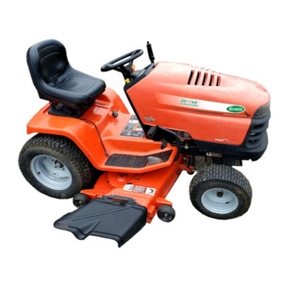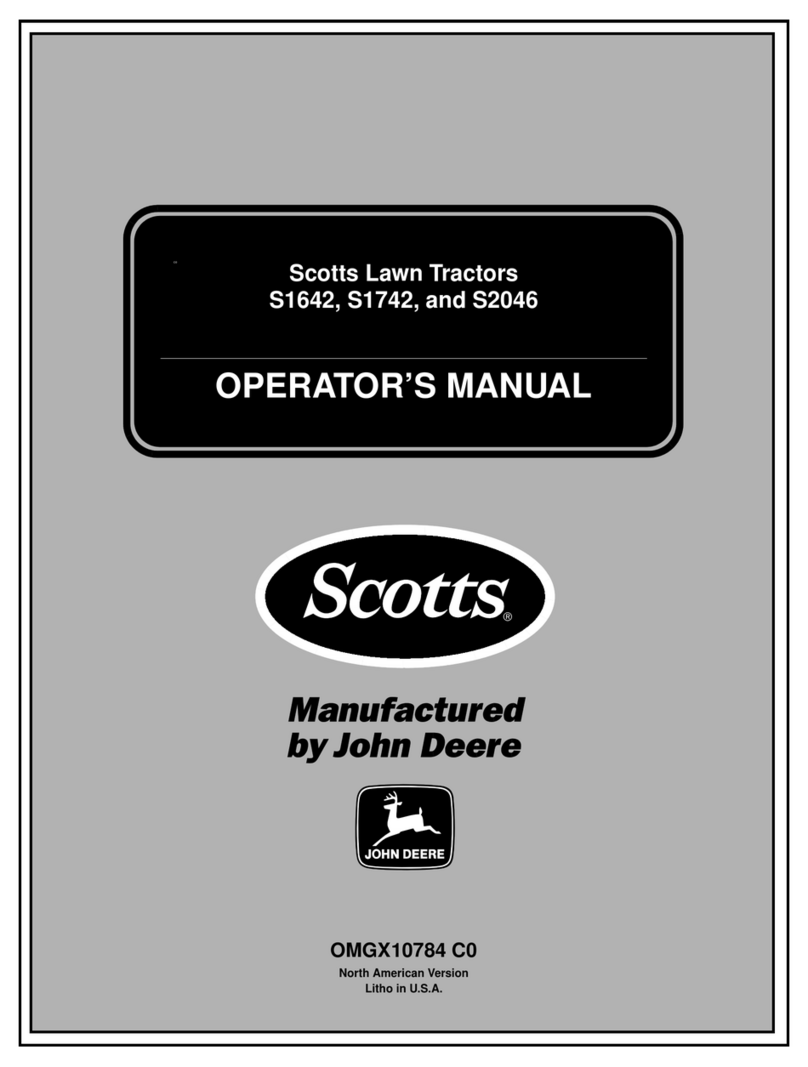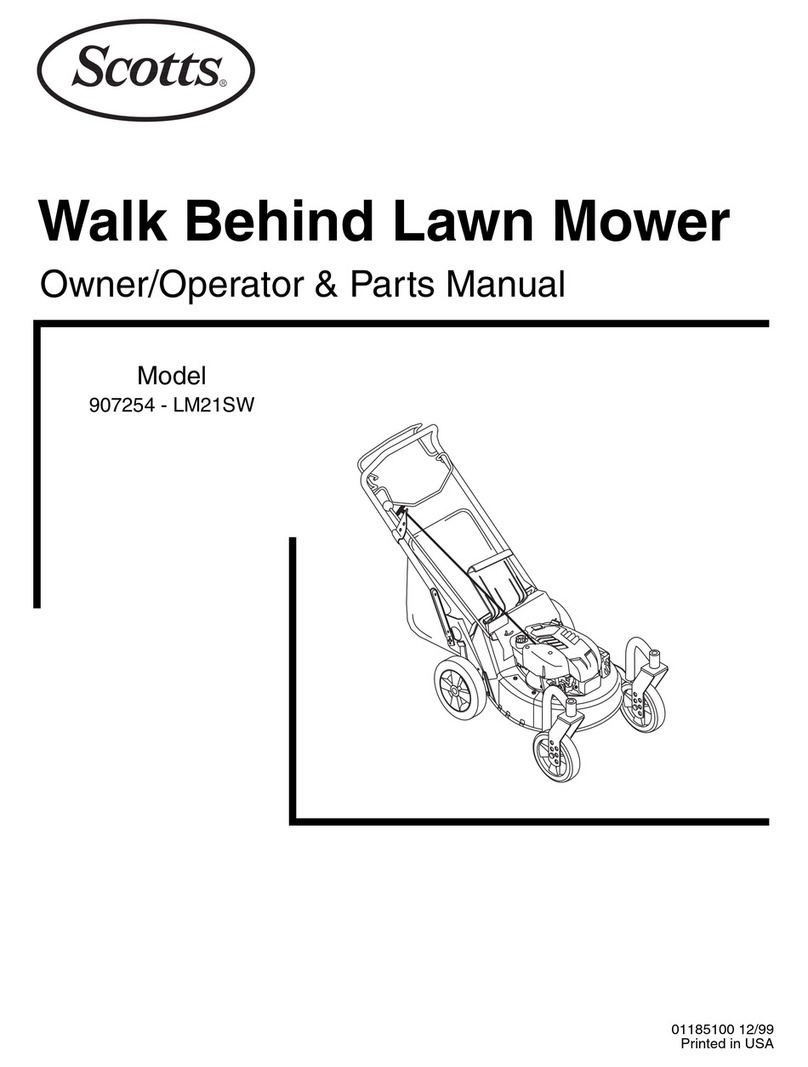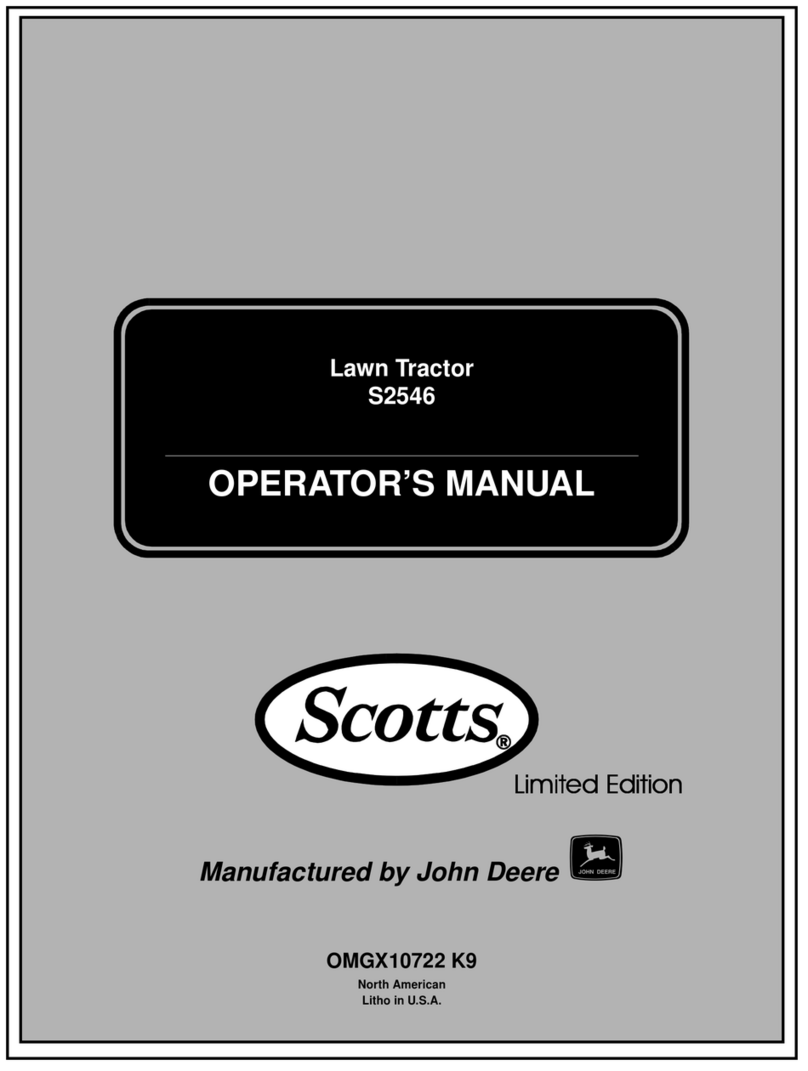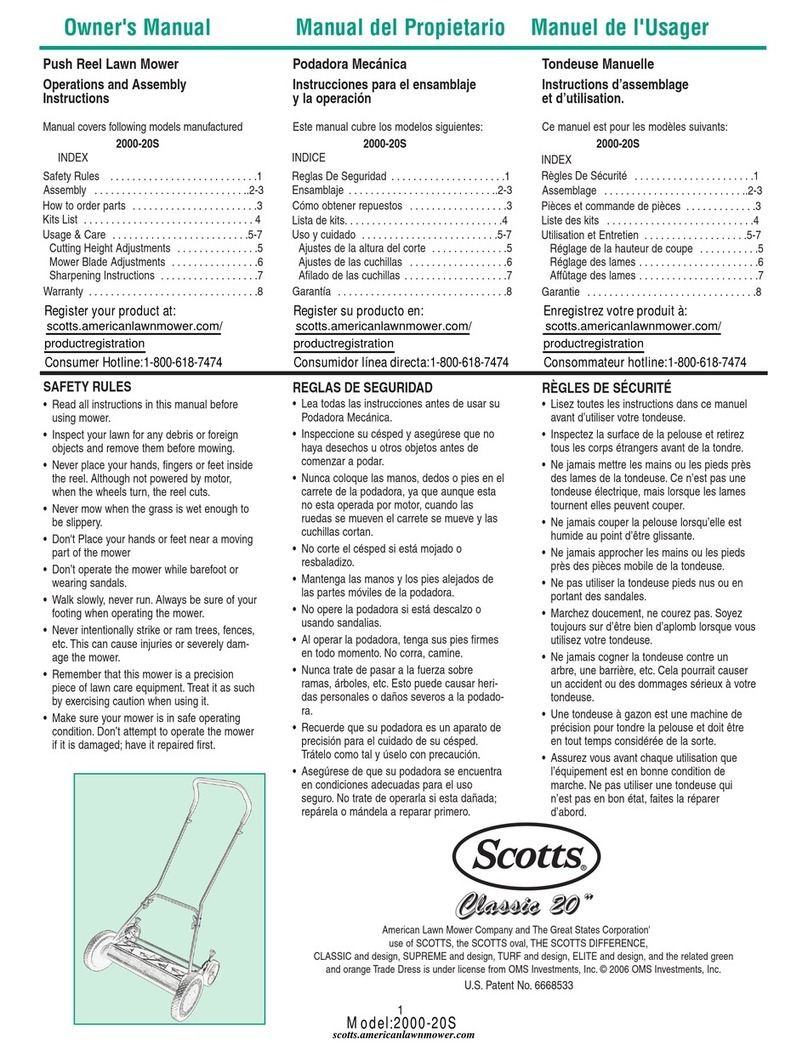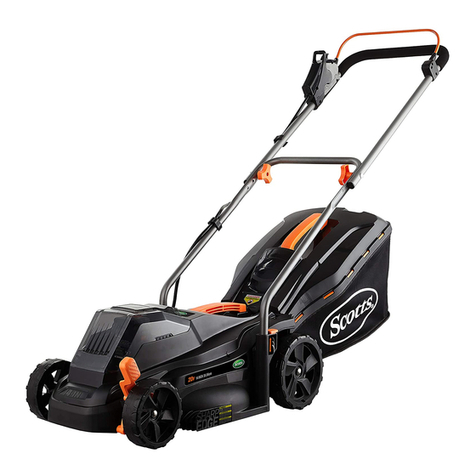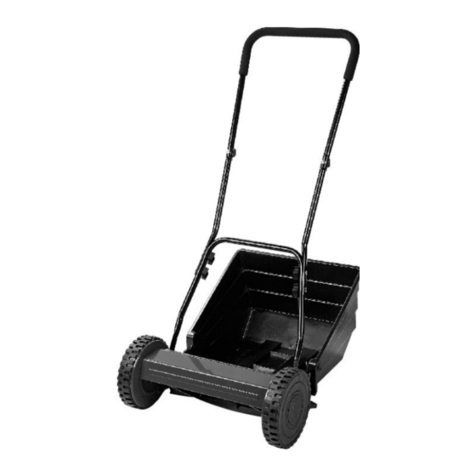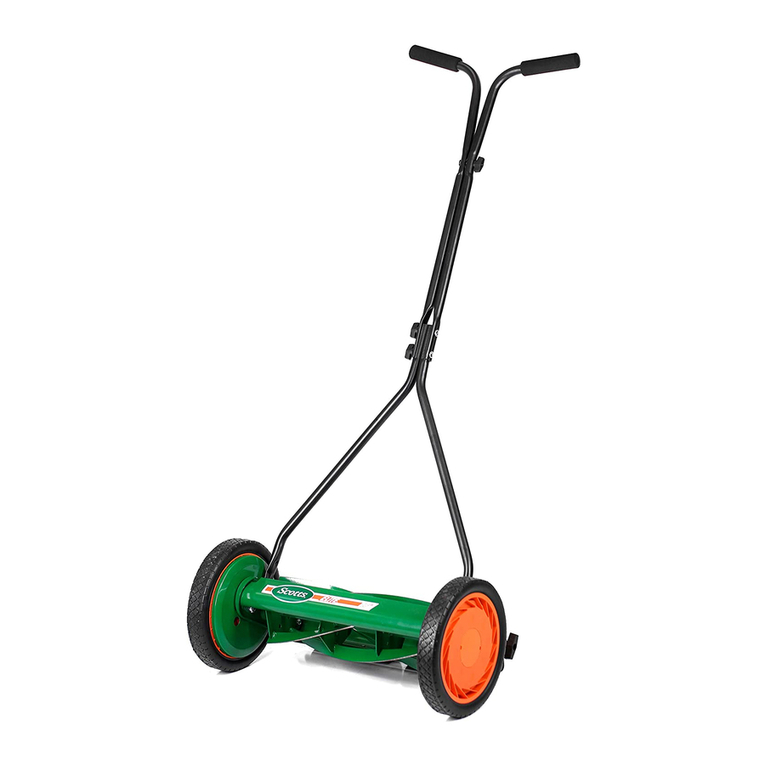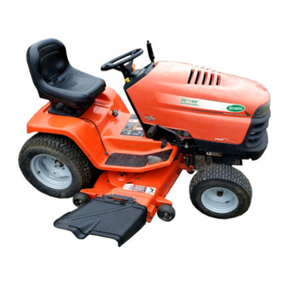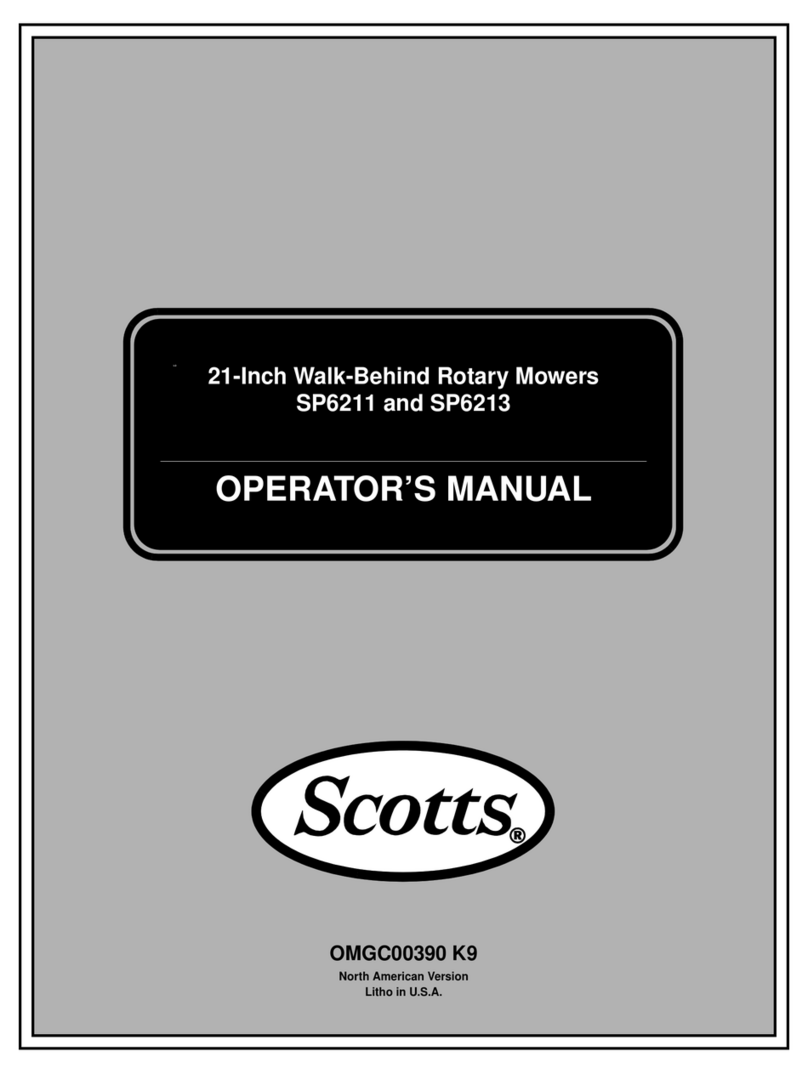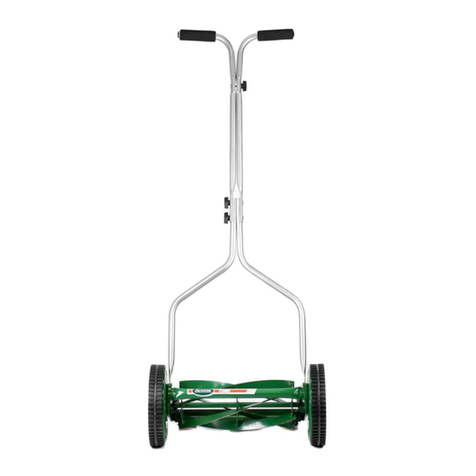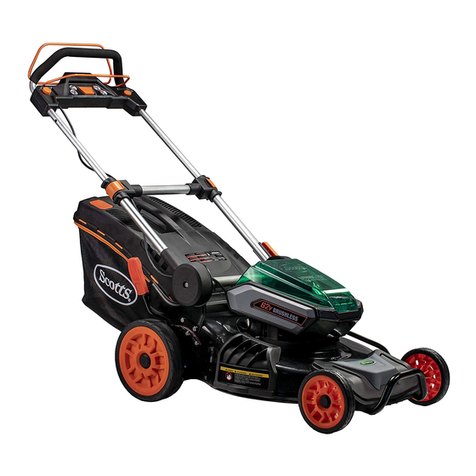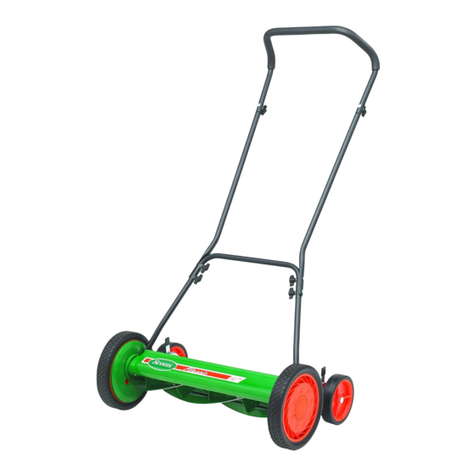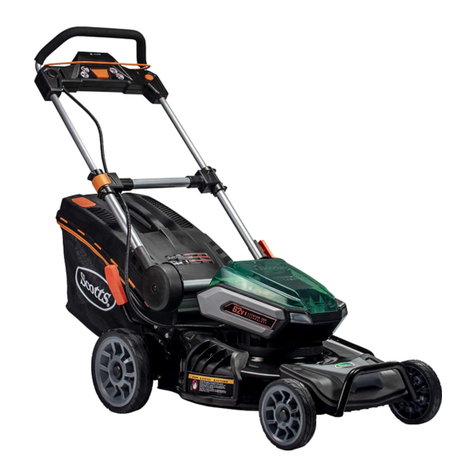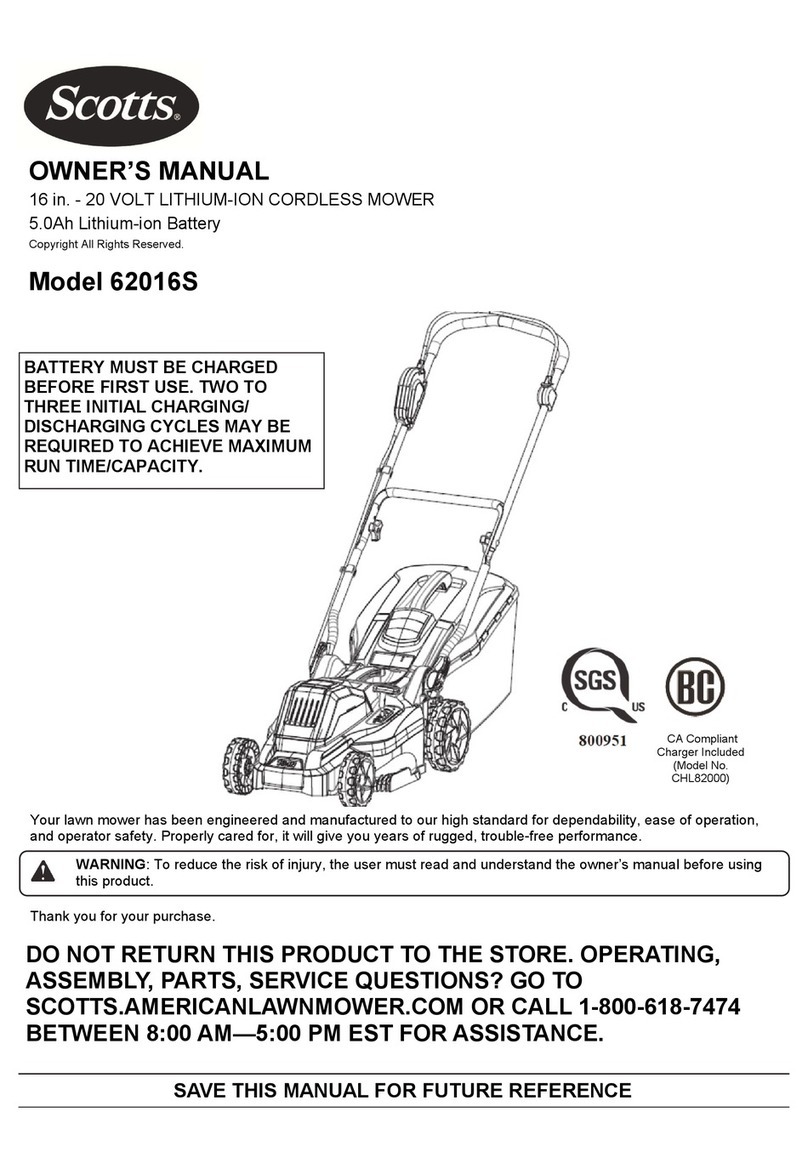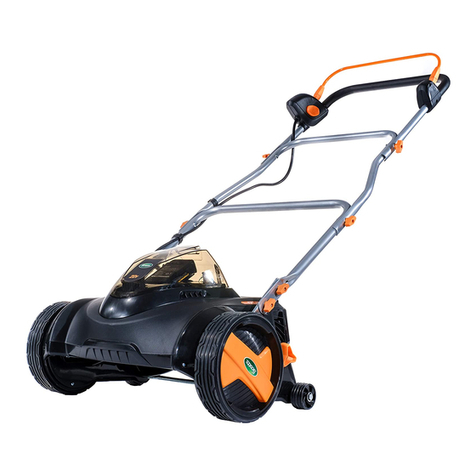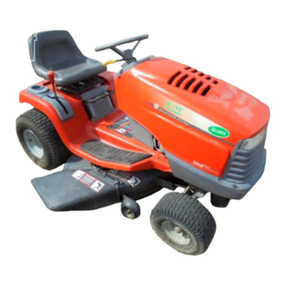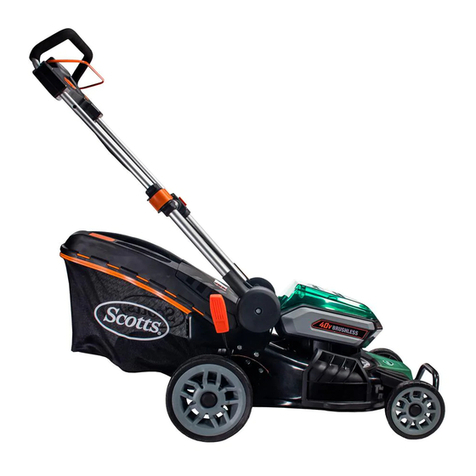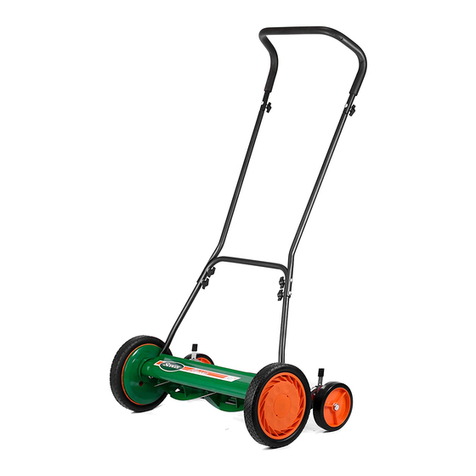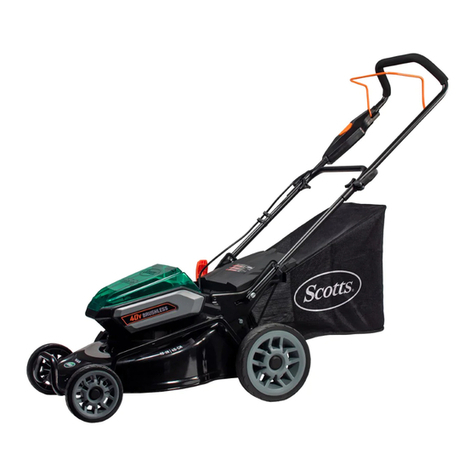
SAFETY RULES
THESE INSTRUCTIONS ARE FOR YOUR PROTECTION. PLEASE READ THEM CAREFULLY.
IMPORTANT
THIS CUTTING MACHINE
IS
CAPABLE
OF AMPUTATING HANDS AND FEET AND THROWING OBJECTS. FAILURE TO OBSERVE THE
FOLLOWING
SAFETY
INSTRUCTIONS COULD RESULT IN SERIOUS INJURY OR DEATH.
I.
GENERAL
OPERATION:
• Know controls and
how
to stop quickly.
• Read, understand, and follow all instructions
in
the manual and
on the machine before starting.
•
Only
allow
responsible
adults,
who
are
familiar
with
instructions, to operate the machine.
• Wear
safety
glasses
or
eye
shields
when
assembling
or
operating the machine.
• Do
not
operate
machine
when
barefooted.
Always
wear
substantial footwear, preferably steel-toed shoes.
• Do
not
wear
loose
fitting
clothing
that
could
get
caught
in
moving parts.
• Clear the area
of
objects such as rocks, toys, wire, etc., which
could be picked
up
and thrown by the blade(s).
• Be sure the area is clear
of
other people before mowing. Stop
machine
if
anyone enters the area.
• Never carry passengers.
• Do
not
mow
In reverse unless absolutely necessary. Always
look down and behind before and while backing.
• Be aware
of
the mower discharge direction and do
not
point
it
at
anyone. Do
not
operate the mower
without
either the entire
grass catcher or the guard in place.
• Slow down before turning.
• Never leave a running machine unattended. Always turn
off
blades, set parking brake, stop engine, and remove keys before
dismounting. .
• Turn
off
blade(s) when
not
mowing.
•
Stop
engine
before
removing
grass
catcher
or
unclogging
chute.
• Mow
only
In daylight
or
good artificial light.
•
Do
not
operate the machinewhile under the influence
of
alcohol
or
drugs.
• Watch
for
traffic when operating near
or
crossing roadways.
• Use care when mowing around a fixed object to prevent the
blade(s) from striking it. Never deliberately run over anyforeign
object.
• Use extra care when loading or unloading the machine into a
trailer or truck.
• Use care when pulling loads
or
using heavy equipment.
a.
Use
only
approved drawbar hitch points.
b.
Limit
loads to those that you can safely control.
c.
Do
not
turn sharply.
Use
care when backing.
d. Use counterweight(s), wheel
weight
or
tire chains when
suggested
in
attachment(s) instructions.
II.
SLOPE
OPERATION:
Slopes are a
major
factor
related
to
loss-of-control
and
tip-over
accidents,
which
can
result
in severe
injury
or death.
All
slopes
require extra caution.
If
you cannot back
up
the slope
or
if
you feel
uneasy on it,
do
not
mow it. ·
DO
•
Uow
up
and down slopes,
not
across.
• Remove obstacles such as rocks, tree limbs, etc.
•
Watch
for
holes, ruts,
or
bumps. Uneven terrain could overturn
the
machine. Tall grass can hide obstacles.
• Use
slow
speed. Choose a low gear so that you will
not
have to
stop
or
shift
while on the slope.
•
Follow
the
manufacturer's recommendations for wheel weights
or
~ights
to
improve stability.
•
Use
alia
care
with
grass catchers or other attachments. These
can
ct.nge
the
slability
of
the machine.
• Keep
..
..,wement
on
the slopes
slow
and gradual. Do
not
llllllllesudden
changes
in
speed or direction.
•
AwoidSIIrtilgor
stDpping on a slope.
If
tires lose traction, turn
off
the~)
..t
proceed slowly straightdown the slope.
DONCJT
•
Do..,
...
-
slapes
Wlless necessary, and
_then
slowly and
graduiiiJ
......._
il
possible.
• Do
not-
-
*op-offs,
ditches
or
embankments.
The
mower could suddenly turn over
if
a wheel
is
over the edge
of
a
cliff
or
ditch, or
if
an edge caves in.
• Do
not
mow
on
wet
grass.
Reduced
traction
could
cause
sliding.
•
Do
not
try to stabilize the machine by putting your
foot
on the
ground.
•
Do
not
use grass catcher on steep slopes.
Ill. CHILDREN:
Tragic accidents can
occur
if
the operator is
not
alertto the presence
of
children.
Children are often attracted
to
the
machine
and the
mowing activity. Never assume
that
children will remain where you
last saw them.
• Keep
children
out
of
the
mowing
area and under the watchful
care
of
another responsible adult.
• Be alert and turn machine
off
if
children enter the area.
•
Before
and when
backing,
look
behind
and
down
tor
small
children.
• Never carry children. They may fall
off
and be seriously injured
or
interfere with safe machine operation.
• Never allow children
to
operate the machine.
• Use extra care when approaching
blind
corners, shrubs, trees,
or other objects that may obscure vision.
IV. SERVICE:
• Use extra care in handling gasoline and other fuels. They are
flammable and vapors are explosive.
a.
Use only
an
approved container.
b. Never remove gas cap
or
add fuel
with
the engine running.
Allow
engine
to
cool before refueling.
Do
not
smoke.
c. Never refuel the machine Indoors.
d. Never
store
the machine
or
fuel container Inside where
there
is
an
open flame,
such
as In a water heater.
•
Check
fuel
supply
before
each
use
allowing
space
for
expansion
as
the
heat
of
the
engine
and/or
sun
can cause
gasoline to expand and overflow the tank.
• Use extra care when handling battery acid. Acid contact with
skin
may
cause
severe
burns.
Eye
contact
may
cause
blindness. ·
• Use extra care when
servicing
the
battery. Explosive:
gas
is
produced
in
the
battery.
Do
not
service
the
battery
while
smoking
or
near an open spark or flame. This may cause the
battery to explode causing serious injury.
• Never run a
machine
inside
a
closed
area.
Exhaust
fumes
contain
CARBON MONOXIDE, an ODORLESS and DEADLY
GAS.
• Keep
nuts
and bolts, especially blade attachment bolts,
tight
and keep equipment
in
good condition.
•
Never
tamper
with
safety
devices.
Check
their
operation
regularly. ·
• Do
not
change
the
engine
governor
settings
or overspeed
engine.
• Reduce
fire
hazards. Keep machine free
of
grass, leaves,
or
other
debris
build-up.
Clean
up
oil
or
fuel
spillage.
Allow
machine
to
cool before storing.
• Stop and inspectthe equipment
if
you
strike an object. Repair,
if
necessary, before restarting.
• Never make adjustments
or
repairs with the engine running.
• Grass catcher components are subject
to
wear, damage, and
deterioration,
which
could
expose
moving
parts
or
allow
objects
to
be
thrown.
Frequently
check
components
and
replace
with
manufacturer's
recommended
parts,
when
necessary.
• Mower blade(s) are sharp and can cut. Wrap the blade(s) or
wear gloves, and use extra caution when servicing them.
•
Check
brake
operation
frequently.
Adjust
and
service
as
required.
LOOK
FORDE
SYIIBOL
TO
POINT OUT IMPORTANT SAFETY PRECAUTIONS. IT MEANS-ATTENTION!!! I
BECOMEALERT!!! YOUR SAFETY IS INVOLVED.
3
